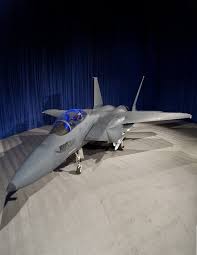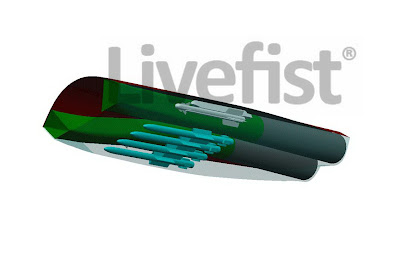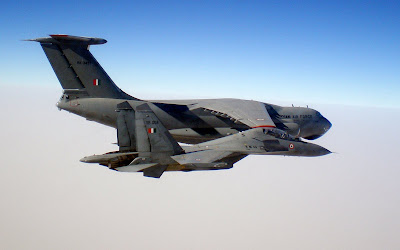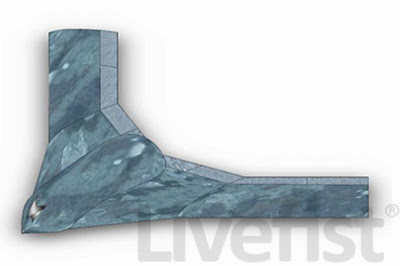BY: PTI

Giving a boost to Navy’s defence capabilities, two state-of-the-art high-speed warships, INS Cankarso and INS Kondul, were commissioned here on Tuesday into the naval fleet.
Andhra Pradesh Governor E.S.L. Narasimhan commissioned the ships in the presence of Commanding-in-Chief of Eastern Naval Command Vice Admiral Anup Singh and other senior Naval officials.
The indigenously-built ships use water jet propulsion technology and can achieve speeds in excess of 35 knots. They will be based in Goa and tasked with the role of detecting, locating and destroying small, fast-moving enemy surface craft engaged in covert operations, a Navy spokesman said.
INS Cankarso and INS Kondul are fitted with 30-mm CRN-91 gun built by Ordnance Factory, Medak, and Igla missiles and set of machine guns ranging from light to heavy. “These features are an improvement over the previous fast attack craft (FAC) ships,” the spokesman said.
These two ships are the first lot of the ten similar ships that the Navy proposed to induct in its fleet. They belong to the Car Nicobar class V and VI in the FAC series.
“In addition to their primary role, the ships will be tasked with the role of policing, anti-smuggling and fisheries protection in India’s coastal waters. In the long run, these ships could help in ensuring stability in India’s maritime zones of responsibility,” the spokesman said.
INS Cankarso is named after an island near Goa while INS Kondul derives its name from an island near Nicobar.
Kolkata-based Garden Reach Ship Builders and Engineers, headed by Rear-Admiral (Retd) K C Shekar, built these ships in two years.
Water jet technology has rapidly gained acceptance as the leading means of propulsion for all types of high-speed marine craft, including ferries, work boats, patrol crafts and pleasure boats.
Recent advances in water jet technology have put them ahead of conventional propulsion systems in high-speed performance and reliability, the Navy spokesman said.
INS Cankarso is commanded by Arun Bahuguna and INS Kondul by Shashidhar R. Patil. The two ships that have 45 sailors and four officers on board, are equipped with a reverse-osmosis technology drinking water plant and sewerage treatment plant.

Giving a boost to Navy’s defence capabilities, two state-of-the-art high-speed warships, INS Cankarso and INS Kondul, were commissioned here on Tuesday into the naval fleet.
Andhra Pradesh Governor E.S.L. Narasimhan commissioned the ships in the presence of Commanding-in-Chief of Eastern Naval Command Vice Admiral Anup Singh and other senior Naval officials.
The indigenously-built ships use water jet propulsion technology and can achieve speeds in excess of 35 knots. They will be based in Goa and tasked with the role of detecting, locating and destroying small, fast-moving enemy surface craft engaged in covert operations, a Navy spokesman said.
INS Cankarso and INS Kondul are fitted with 30-mm CRN-91 gun built by Ordnance Factory, Medak, and Igla missiles and set of machine guns ranging from light to heavy. “These features are an improvement over the previous fast attack craft (FAC) ships,” the spokesman said.
These two ships are the first lot of the ten similar ships that the Navy proposed to induct in its fleet. They belong to the Car Nicobar class V and VI in the FAC series.
“In addition to their primary role, the ships will be tasked with the role of policing, anti-smuggling and fisheries protection in India’s coastal waters. In the long run, these ships could help in ensuring stability in India’s maritime zones of responsibility,” the spokesman said.
INS Cankarso is named after an island near Goa while INS Kondul derives its name from an island near Nicobar.
Kolkata-based Garden Reach Ship Builders and Engineers, headed by Rear-Admiral (Retd) K C Shekar, built these ships in two years.
Water jet technology has rapidly gained acceptance as the leading means of propulsion for all types of high-speed marine craft, including ferries, work boats, patrol crafts and pleasure boats.
Recent advances in water jet technology have put them ahead of conventional propulsion systems in high-speed performance and reliability, the Navy spokesman said.
INS Cankarso is commanded by Arun Bahuguna and INS Kondul by Shashidhar R. Patil. The two ships that have 45 sailors and four officers on board, are equipped with a reverse-osmosis technology drinking water plant and sewerage treatment plant.

 to Pakistan Anne W Patterson, Vice Admiral Michael LeFever – the US Defence Representative in Pakistan – along with other senior PAF, USAF, civil and military officials were also present on the occasion. Qamar termed the handing over of the aircraft to Pakistan a “happy augury” as the deal for the supply of these aircraft by the US was signed back in 2006, but it became controversial at the hands of critics on both sides. However, he said the deal had matured of late following efforts put in by the “good people” living in the two friendly countries.
to Pakistan Anne W Patterson, Vice Admiral Michael LeFever – the US Defence Representative in Pakistan – along with other senior PAF, USAF, civil and military officials were also present on the occasion. Qamar termed the handing over of the aircraft to Pakistan a “happy augury” as the deal for the supply of these aircraft by the US was signed back in 2006, but it became controversial at the hands of critics on both sides. However, he said the deal had matured of late following efforts put in by the “good people” living in the two friendly countries.















































